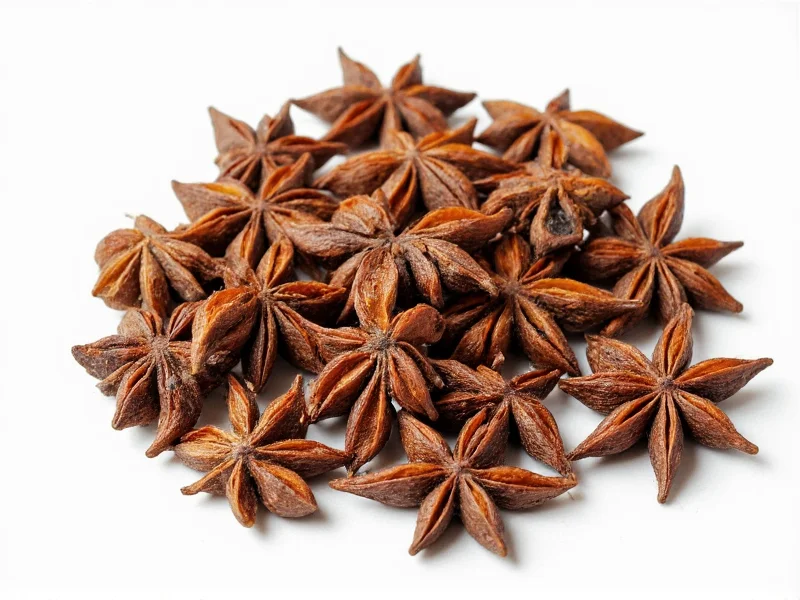Anise flavor is characterized by its distinctive sweet, warm licorice-like taste primarily from the compound anethole. This aromatic profile differs from star anise and fennel despite similar flavor notes, originating specifically from Pimpinella anisum seeds used globally in culinary applications, spirits production, and traditional medicine.
Understanding the Unique Flavor Profile of Anise
When exploring what does anise flavor taste like, you'll discover a complex sensory experience that goes beyond simple sweetness. True anise (Pimpinella anisum) delivers a clean, sweet licorice note with subtle floral undertones and a warm finish. Unlike artificial licorice flavors, genuine anise offers nuanced complexity that evolves on the palate.
The primary compound responsible for anise flavor is trans-anethole, comprising 80-90% of the essential oil in anise seeds. This organic compound activates specific taste receptors that create the signature sweet-licorice sensation. Interestingly, anethole's solubility changes with temperature, explaining why anise flavors become more pronounced when heated—a crucial consideration for anise flavor profile in cooking.
Botanical Origins and Chemical Composition
Anise (Pimpinella anisum) belongs to the Apiaceae family, sharing botanical relations with carrots, celery, and parsley. The flavor comes exclusively from the dried fruit (commonly called seeds) of this flowering plant native to the Eastern Mediterranean and Southwest Asia.
| Compound | Percentage in Essential Oil | Flavor Contribution |
|---|---|---|
| trans-Anethole | 80-90% | Sweet licorice base note |
| Linalool | 2-5% | Floral, citrus undertones |
| γ-Himachalene | 1-3% | Woody, earthy background |
| Anise ketone | 0.5-2% | Warm, spicy nuance |
Distinguishing Anise From Similar Flavors
Many confuse anise with star anise or fennel due to overlapping flavor profiles. Understanding the difference between anise and star anise is essential for culinary precision:
- True Anise (Pimpinella anisum): Small, greenish-gray seeds with sweet, delicate licorice flavor. Used in Mediterranean baking, Middle Eastern cuisine, and classic liqueurs like anisette.
- Star Anise (Illicium verum): Eight-pointed star-shaped fruit from a Chinese evergreen tree. Stronger, more pungent licorice flavor with subtle camphor notes. Primary source of shikimic acid used in pharmaceuticals.
- Fennel (Foeniculum vulgare): Larger seeds with milder, sweeter profile featuring prominent citrus notes alongside licorice. Common in Italian sausages and Scandinavian baking.
Culinary Applications of Anise Flavor
Chefs worldwide leverage anise's distinctive profile across diverse applications. In Mediterranean cuisine, bakers incorporate ground anise seeds into biscotti and pizzelle for that characteristic sweet finish. French pastis and Greek ouzo demonstrate anise flavor in alcoholic beverages, where the "ouzo effect" creates milky emulsification when water is added.
For how to use anise in baking, toast whole seeds before grinding to maximize flavor release. Anise pairs exceptionally well with:
- Citrus fruits (particularly oranges and lemons)
- Rich meats like duck and pork
- Other warm spices including cinnamon and cloves
- Chocolate in certain dessert applications
Historical Significance and Cultural Uses
Anise has been valued since ancient Egyptian times, with seeds found in pharaonic tombs. Roman naturalist Pliny the Elder documented its digestive benefits, while medieval European monks used it to sweeten breath. Traditional Mexican atole beverages incorporate anise for both flavor and purported medicinal properties.
The distinctive anise seed flavor characteristics made it valuable before modern sweeteners, often substituting for sugar in historical recipes. Its antimicrobial properties also contributed to its historical use in food preservation—a practical benefit beyond mere flavor enhancement.
Practical Usage Tips for Home Cooks
To maximize anise flavor in your cooking:
- Storage: Keep whole seeds in airtight containers away from light; they retain potency for 2-3 years versus 6 months for ground anise
- Preparation: Lightly toast seeds before use to intensify flavor without bitterness
- Measurement: Start with 1/4 teaspoon ground anise per recipe, adjusting to taste—its potency means a little goes far
- Substitution: When replacing star anise, use half the amount of true anise due to its more concentrated flavor
Common Misconceptions Clarified
Despite frequent confusion, anise and licorice root come from completely different plants. Licorice (Glycyrrhiza glabra) delivers a more intense, medicinal sweetness from glycyrrhizin, while anise offers a brighter, fruitier profile. The anise vs fennel flavor comparison reveals fennel's milder, more versatile character suitable for savory applications where anise might overpower.











 浙公网安备
33010002000092号
浙公网安备
33010002000092号 浙B2-20120091-4
浙B2-20120091-4